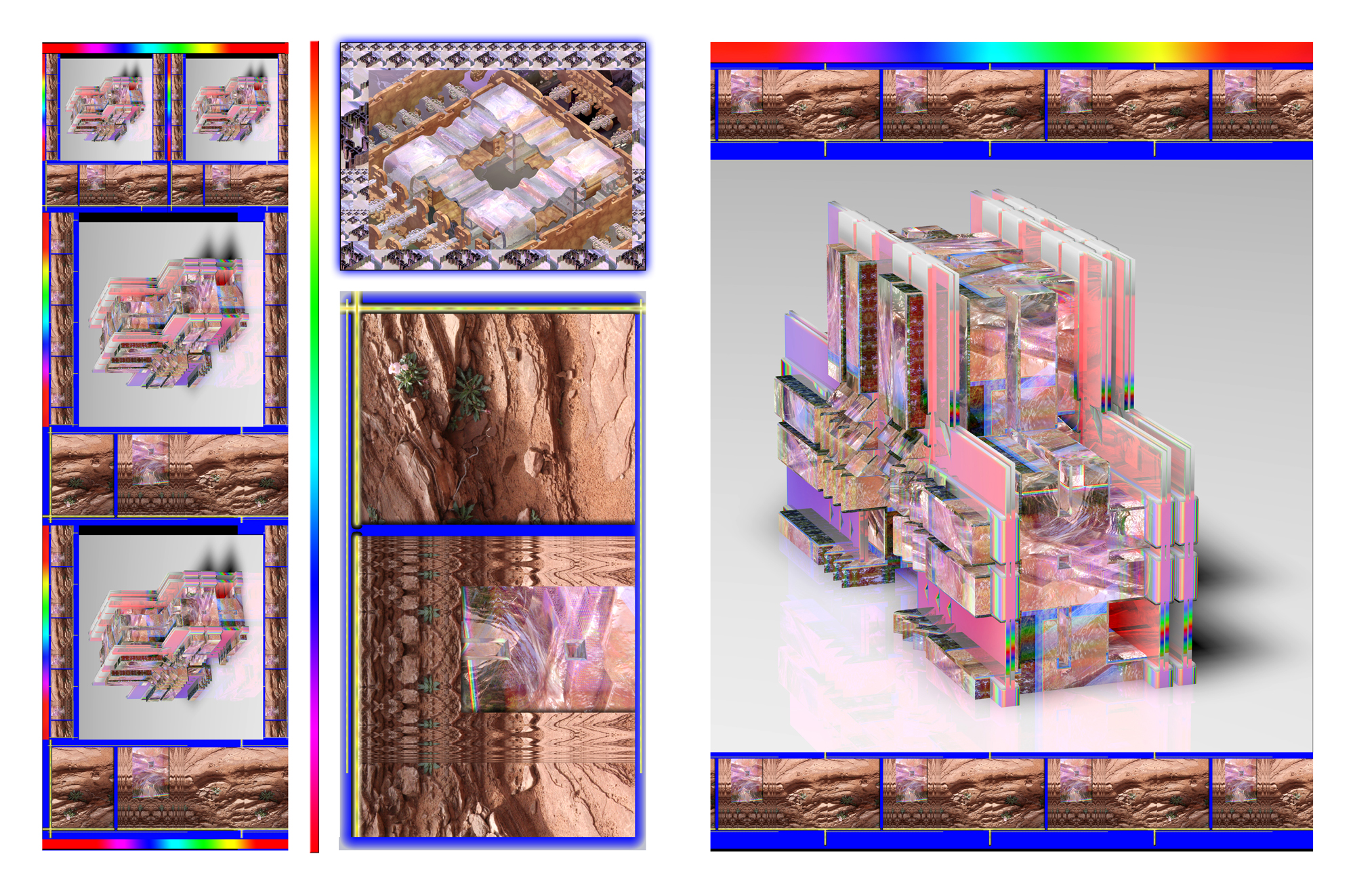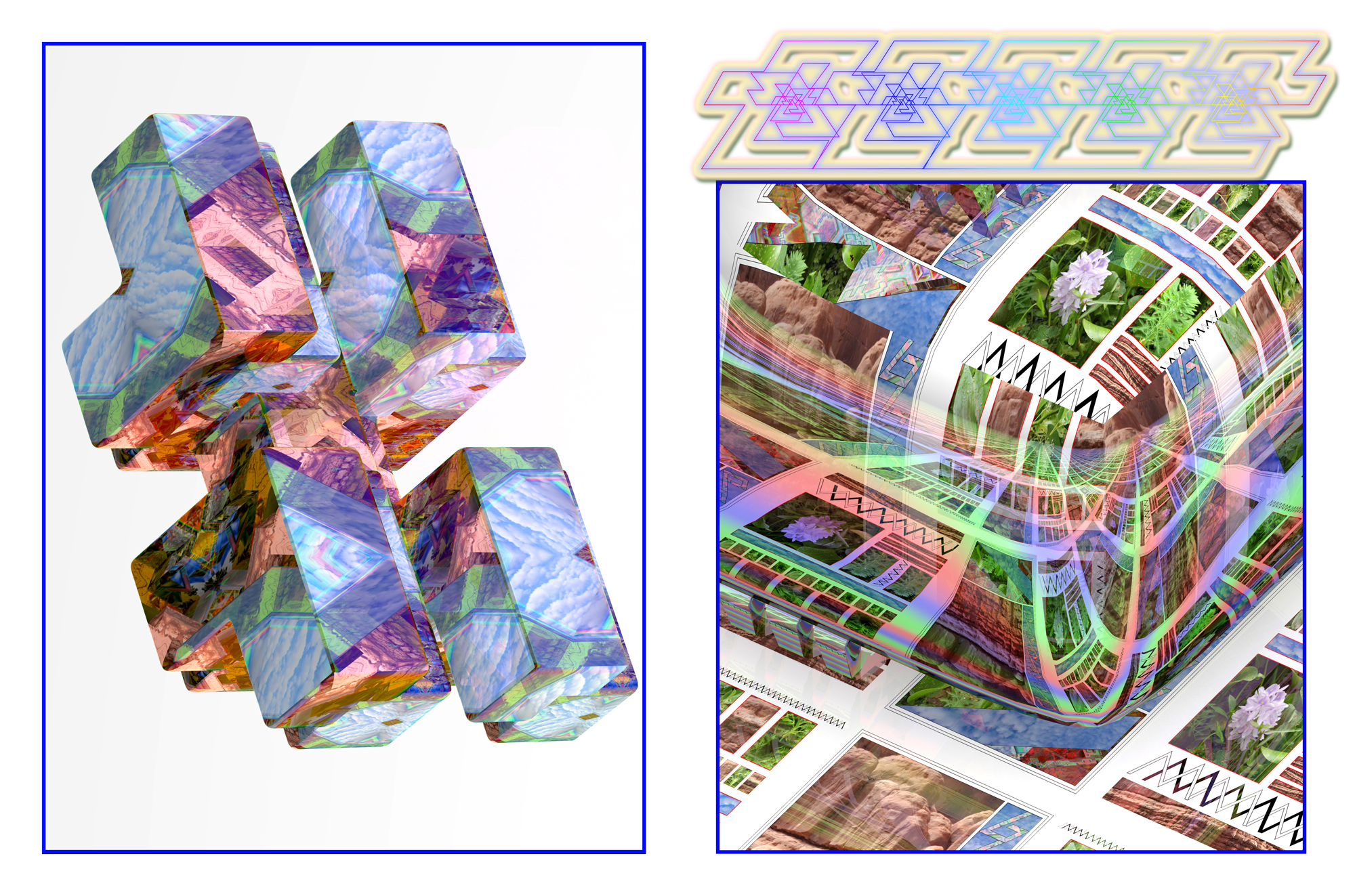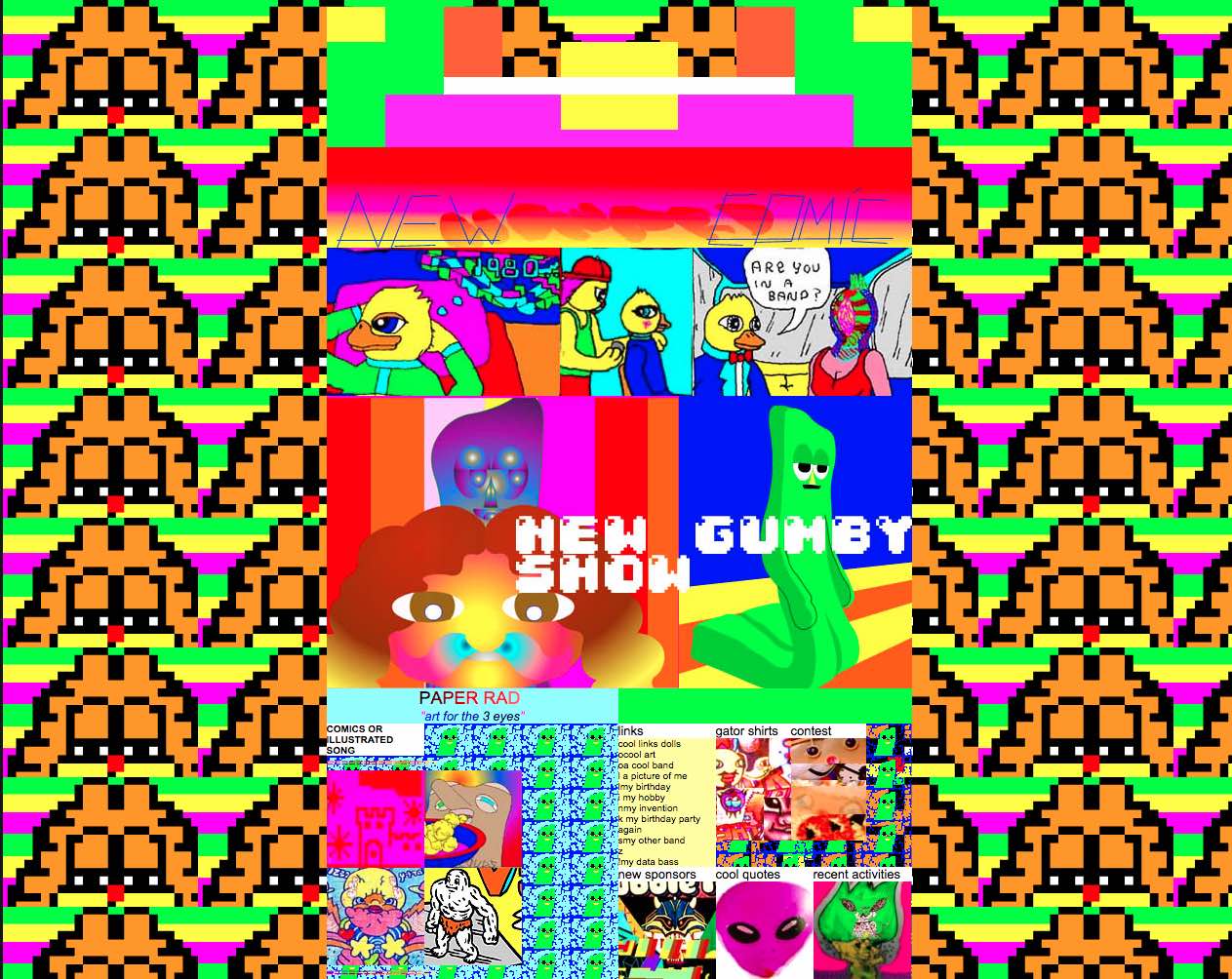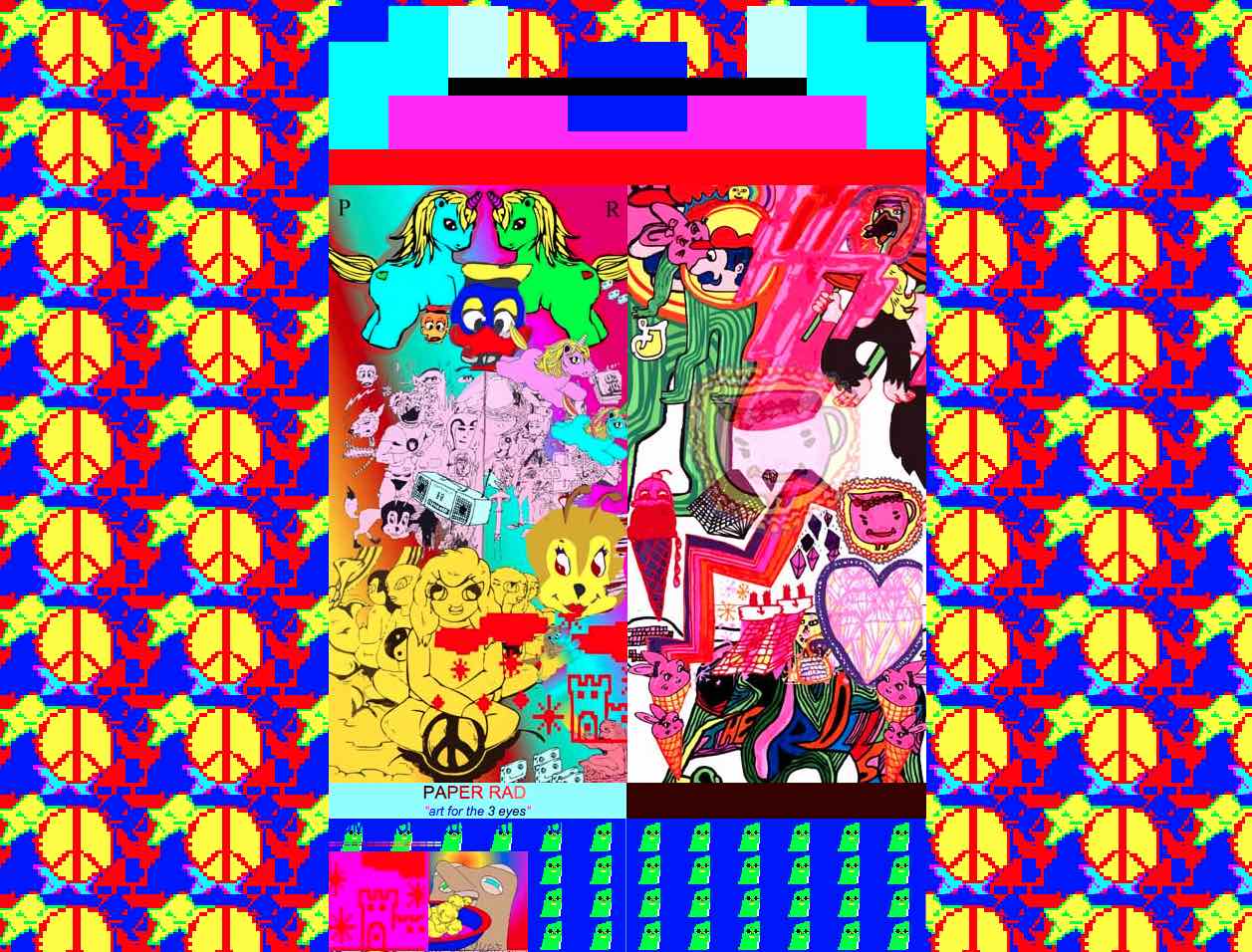One of the most important collectives to emerge in the last decade, Paper Rad exploded at the edge of a cultural time zone—before the social web—when subculture was still palpable and also clearly becoming impossible to sustain. They emerged in the early ’00s within a community dedicated to DIY art practice that had strong roots in Providence, Rhode Island, as well as cities like Detroit, Baltimore, Boston, and towns in Western Massachusetts became known for a cartoon cosmos that felt like a psychedelic, subversive response to American pop culture that was hatched out of a sincere and deep engagement to it. Their work began with ’zines and music, and eventually grew to encompass digital animation, videos, installations, and their website—paperrad.org—which became an increasingly central part of their work as it drew attention and followers. [1]
… the page was changed daily, continually layered with new content or reorganized spatially. Amid this constant development, there are a few distinguishing elements to the website that endured throughout its seven-year life. First, it carried over the DIY ethos and aesthetics from the culture from which it emerged—paperrad.org was not an easy-to-navigate online artist’s CV but existed more like a maze of found, remixed, and original content. Visitors were only able to track the identities of participating members through deep research, which lent the site a mysterious and open feel, as if Paper Rad could be as small as one person or as large as a thriving subculture. A second distinguishing factor was that Paper Rad created their own discreet world that blended influences from both analog and digital culture. In the Paper Rad cosmos, hacked and re-versioned My Little Ponies mingled with animated gifs and characters originally rendered in printed ’zines, like Tux Dog, which were digitized and made open source. This straddling of different pop cultural realms—television and the internet, mass media and amateur media—became a trademark of Paper Rad, as did a disregard for medium specificity. The Paper Rad website, presenting recycled cartoon characters like Gumby in Flash animation sagas, was evidence of the eroding boundaries between media we are so familiar with today. [1]
Paper Rad's visual projects often employ bright fluorescent palettes juxtaposed with primary colors to create a distinctive "lo-fi" look. It adopts a variety of techniques and elements to achieve this look, including pop art, collage, punk art, as well as imagery from popular culture. The multimedia projects incorporate MIDI audio, poor recordings of original sound effects and voices, pixelization, and other crude audio and visual components. Paper Rad recycled or appropriated obscure sounds and images from a variety of sources, including old cartoons, commercials, and late-night television. [2]
The collective–which consisted of siblings Jessica and Jacob Ciocci, Ben Jones, and other collaborators–cultivated a unique interest in exploring artistic strategies from other media, especially comics and zines, through web-based and multimedia works. Serially updated during the group’s most active period (2001-2008), paperrad.org was both an archive and a artwork, a riot of brightly colored compositions featuring graphics and a mazelike compilation of characters from otherwise overlooked aspects of ’70s and ’80s pop culture. [3]
Paper Rad Homepages 01-08 Collected by Rhizome
Selected Webpages
 Module Generator Unit or Array
Module Generator Unit or Array
 Area Transduce
Area Transduce
 Plant Transmitter Guide
Visible Cloaks & Brenna Murphy - Permutate Lex
MSHR - Wave Guide Edifice
Plant Transmitter Guide
Visible Cloaks & Brenna Murphy - Permutate Lex
MSHR - Wave Guide Edifice




